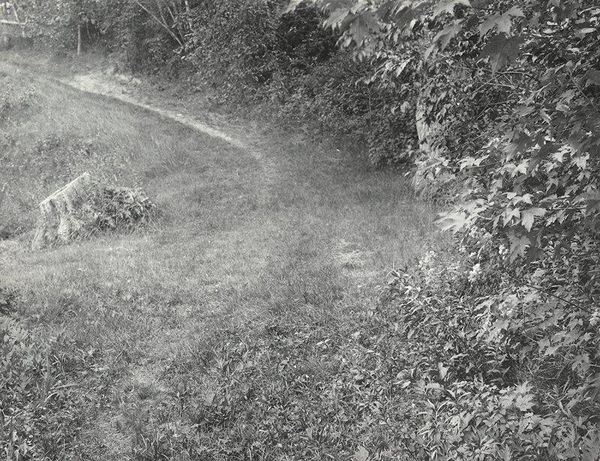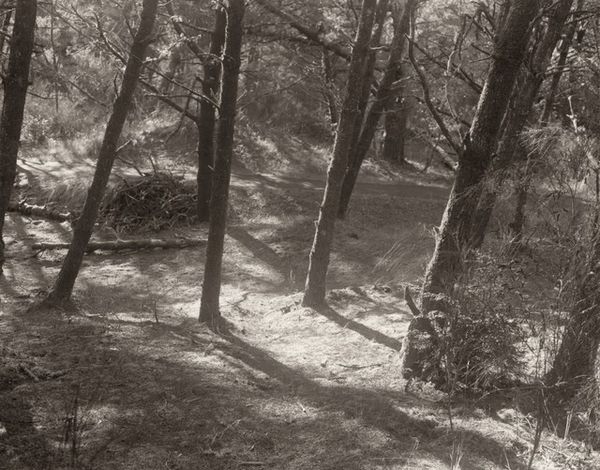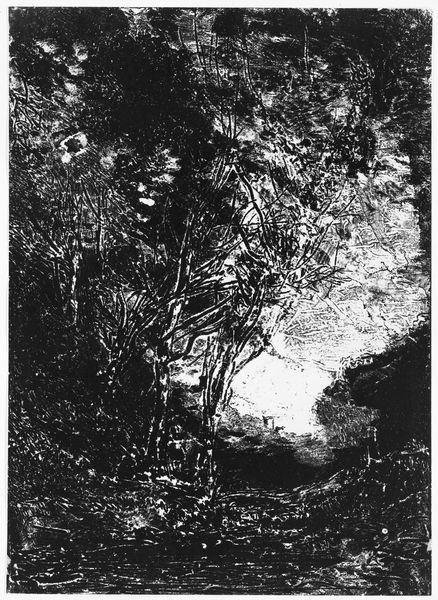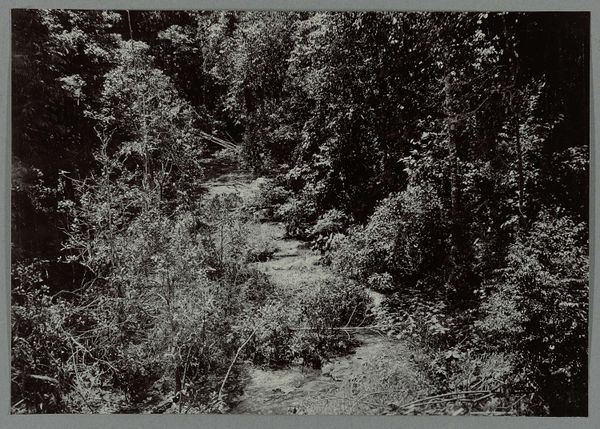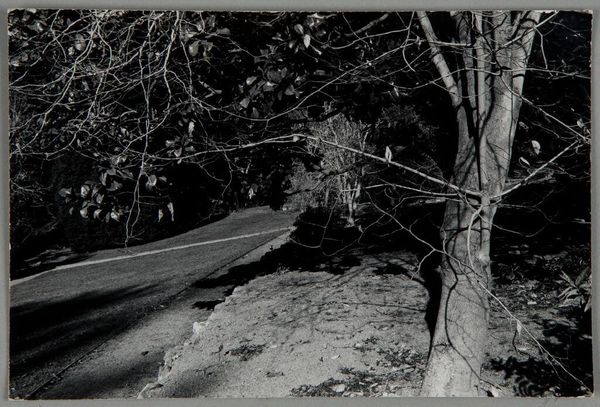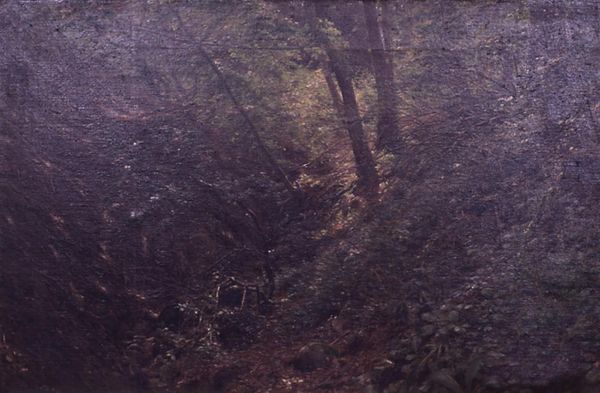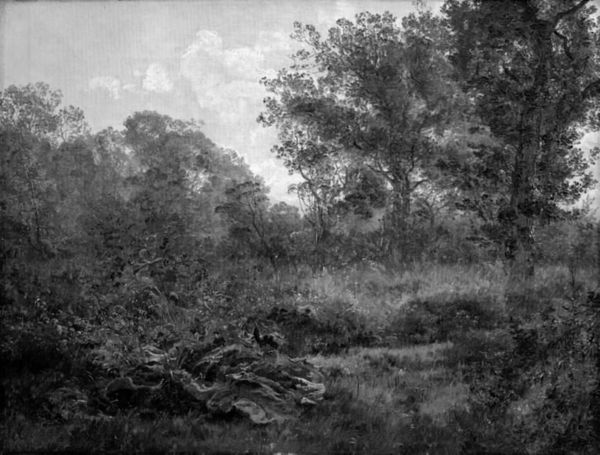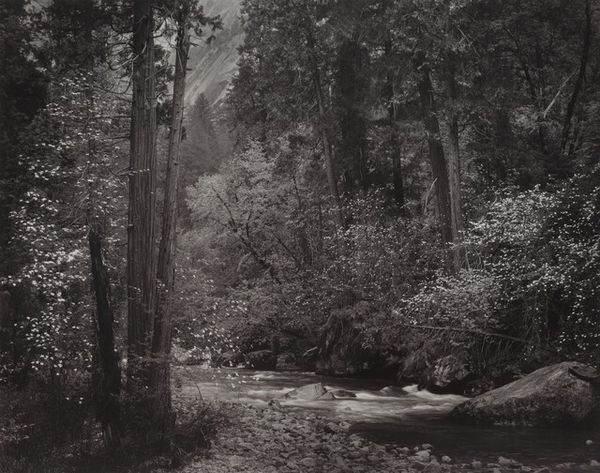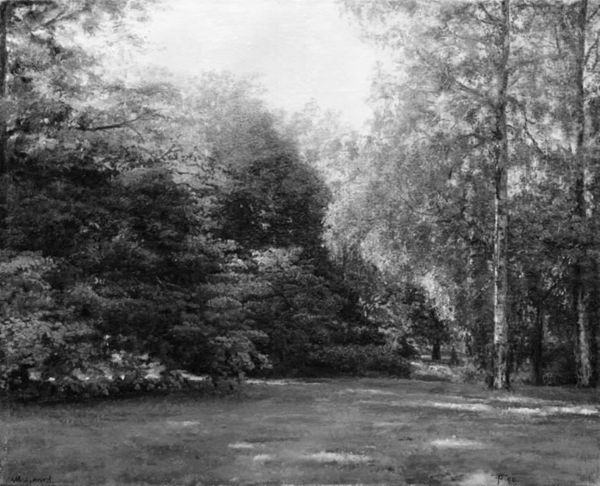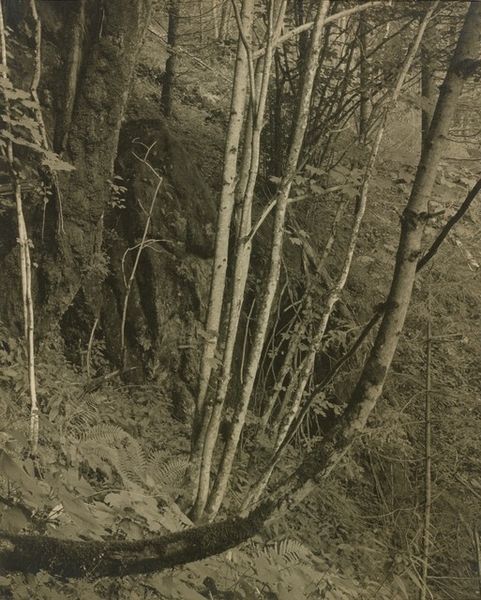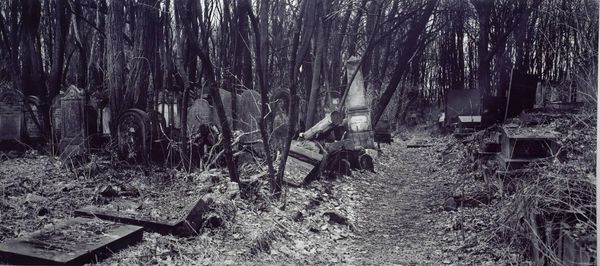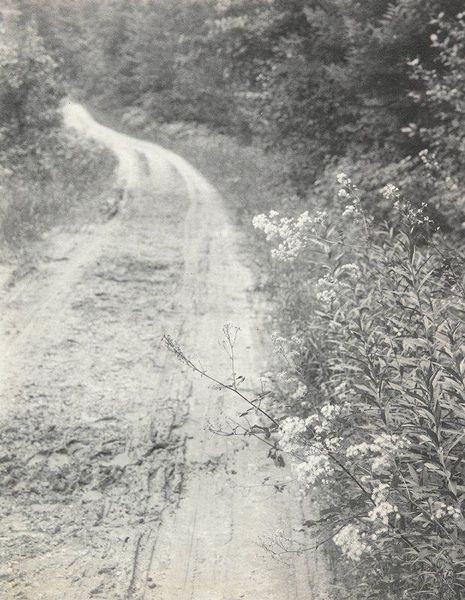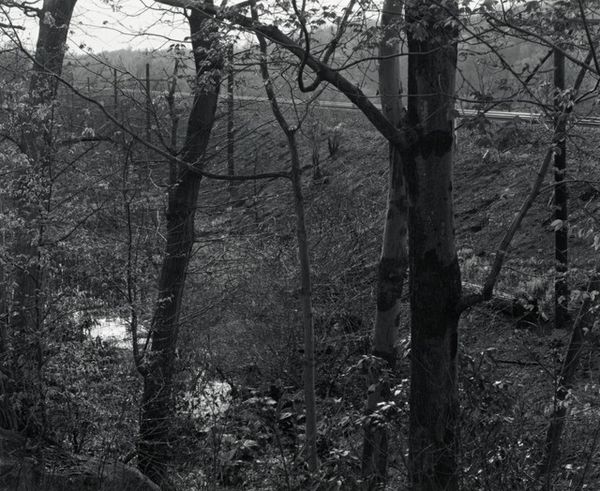
Erinnerungsspur--Statische Vibration (Memory's Trace--Static Vibration) Possibly 1978 - 1979
0:00
0:00
photography, gelatin-silver-print
#
conceptual-art
#
black and white photography
#
landscape
#
photography
#
gelatin-silver-print
#
monochrome photography
#
monochrome
#
monochrome
Dimensions: image: 39.3 x 29.3 cm (15 1/2 x 11 9/16 in.) sheet: 40.5 x 30.7 cm (15 15/16 x 12 1/16 in.)
Copyright: National Gallery of Art: CC0 1.0
Curator: This is Dieter Appelt’s gelatin silver print, "Erinnerungsspur--Statische Vibration (Memory's Trace--Static Vibration)," possibly created between 1978 and 1979. Editor: My immediate sense is of something hidden yet intensely present—almost vibrating from the print. There's a stark contrast that divides this image in two. Curator: The monochromatic approach amplifies the composition’s visual weight, doesn’t it? Notice how Appelt employs grayscale to articulate the forms, textures, and contrasts of this forest setting, really reducing it to its barest geometry. Editor: Yes, and the formal constraints reveal so much. I see this dense undergrowth split by what looks almost like a scar of light. To me, it evokes the experience of trauma being inscribed upon a landscape and, by extension, upon the body. We know he explored the lingering effects of Germany’s past... does this trail represent a historical rupture? Curator: Certainly, the bright "scar," as you call it, cuts through the darkness of the vegetation, creating tension and movement within the still photograph. I find the effect to be less narrative and more of a meditation on presence. This luminescence, against such deep shadows, offers a potent symbolic language. Editor: Agreed, it works symbolically. But whose memories are being traced here? This ghostly mark reminds me of paths beaten down by refugees, escape routes through a hostile landscape. It becomes about who gets to traverse these spaces, and under what conditions. Curator: Interesting observation. But returning to the artistic framework: the static vibration Appelt describes may just allude to how he arrests movement within the fixed, photographic medium. It's both still and intensely alive, a vibrating stasis. Editor: Perhaps. For me, reading the "trace" as solely a formal exercise risks sidelining broader issues. This landscape bears the weight of history, which cannot be visually separated from the photographic process. Appelt doesn’t seem to offer resolutions; only powerful visual articulations of tension. Curator: Indeed. The photograph functions almost as a self-contained system, referencing the external world, while remaining decidedly distinct, abstract, and thought-provoking in its composition. Editor: So it does. The play of darkness and light seems poised to ask enduring questions about space and belonging, or displacement and identity.
Comments
No comments
Be the first to comment and join the conversation on the ultimate creative platform.
